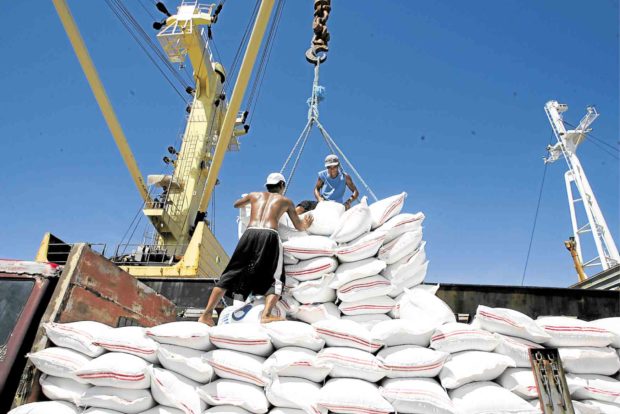PH to cede world’s largest rice importer spot, but purchases still up
The Philippines is projected to lose its dubious distinction as the world’s largest importer of rice this year as China significantly ramps up its own rice imports.
The recently imposed rice tariff cuts, however, are still expected to raise the country’s import level even as local producers continue to protest.
A report published by the United States Department of Agriculture’s Foreign Agricultural Service (USDA-FAS) forecasted the Philippines’ rice imports to increase to 2.1 million metric tons (MT) this year, lower than China’s projected import volume at 3.2 million MT.
However, this is still higher than the country’s rice imports last year at 2.06 million MT. The reduced tariffs on rice, pegged at 35 percent from a high of 50 percent, also prompted the USDA-FAS to readjust its previous projection of 2 million MT, noting the reduced tariffs would attract other rice-exporting countries in Asia to enter the Philippine market.
“The Philippines is expected to be the second-largest [rice] importer in 2021 and recently announced a change to its import tariffs that have the potential to shift its suppliers,” the USDA-FAS said.
Article continues after this advertisementWhile the foreign affairs agency noted Vietnam may continue being the major supplier of rice to the Philippines, it stressed the new policy could entice India and Pakistan to ramp up imports in the country. Currently, India is recognized as the world’s biggest exporter of rice.
Article continues after this advertisementFilipino farmers continue to oppose the tariff adjustment as it has the potential to flood the market and further depress palay prices, especially as the Department of Agriculture aims to increase the country’s palay production to 20.4 million MT this year from 19.4 million MT last year.
Agriculture Secretary William Dar said the agency wanted to raise the country’s rice self-sufficiency rate to 95 percent from 90 percent, thus puzzling agricultural leaders as to why the agency still pushed for lower rice tariffs.
Moreover, relatively cheaper prices of rice were recorded in May, which eased the effect of inflation among the country’s poor, government data showed.
As of April, the country’s rice stocks are enough to meet the population’s rice requirement for 67 days. About 60 percent of the country’s rice supply has already been purchased by households, while 30 percent is stored in commercial warehouses. The remaining 10 percent is with the National Food Authority, according to the Philippine Statistics Authority. INQ
